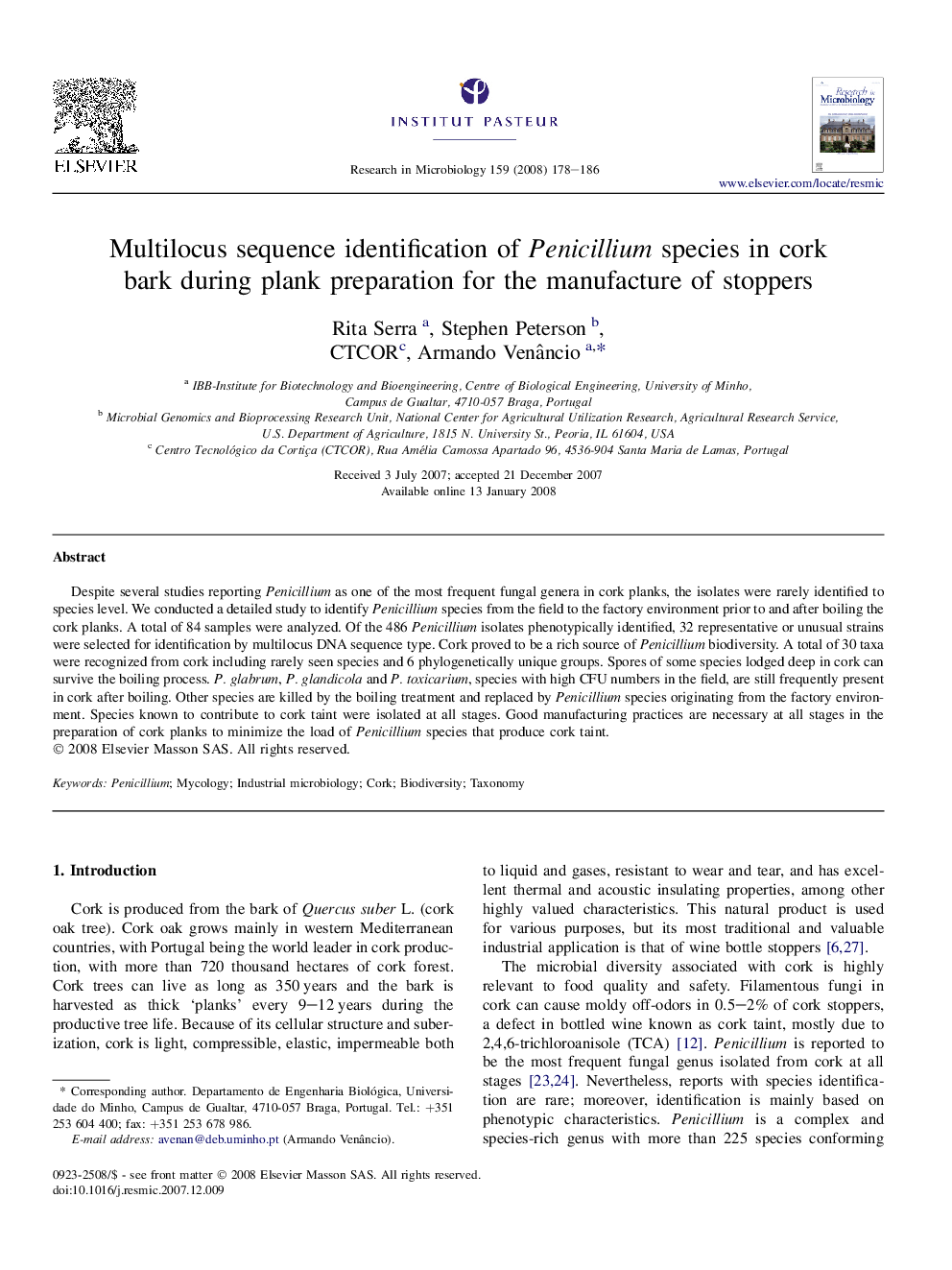| Article ID | Journal | Published Year | Pages | File Type |
|---|---|---|---|---|
| 4359162 | Research in Microbiology | 2008 | 9 Pages |
Despite several studies reporting Penicillium as one of the most frequent fungal genera in cork planks, the isolates were rarely identified to species level. We conducted a detailed study to identify Penicillium species from the field to the factory environment prior to and after boiling the cork planks. A total of 84 samples were analyzed. Of the 486 Penicillium isolates phenotypically identified, 32 representative or unusual strains were selected for identification by multilocus DNA sequence type. Cork proved to be a rich source of Penicillium biodiversity. A total of 30 taxa were recognized from cork including rarely seen species and 6 phylogenetically unique groups. Spores of some species lodged deep in cork can survive the boiling process. P. glabrum, P. glandicola and P. toxicarium, species with high CFU numbers in the field, are still frequently present in cork after boiling. Other species are killed by the boiling treatment and replaced by Penicillium species originating from the factory environment. Species known to contribute to cork taint were isolated at all stages. Good manufacturing practices are necessary at all stages in the preparation of cork planks to minimize the load of Penicillium species that produce cork taint.
